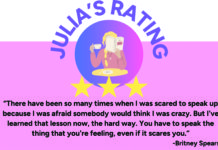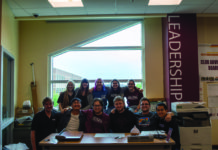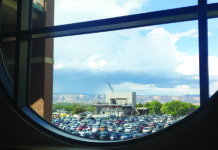During quarantine we relearned what it meant to be a friend—now comes the moment to consider what a good friend looks like during the aftermath of quarantine.
Friendship looks different for everyone, and everyone looks for different attributes in a friend. For Colorado Mesa University (CMU) Freshman Heath McCool, a good friend will go to lunch with him and be there to lend a helping hand.
Meanwhile, student Rowan Clark looks for someone who is nice and won’t get upset if she forgets to text them for a couple of days.
“Most of my friends, we don’t exactly hang out all the time,” Counseling Psychology Major Carily Cook said. “So mainly texting, kind of hanging out while social distancing, or wearing masks too was a big part of it.”
What their responses boil down to is two things that we are all looking for during these difficult times: support and understanding.
It should be remembered that social distancing does not mean emotional distancing. That should be the first rule of being a good friend during the pandemic.
Many people’s mental health took a toll during quarantine. Humans are social beings, and we crave human interaction. Reaching out to a friend may brighten their mood. Supporting a friend during difficult times is a good way to maintain connections and potentially ease your own mood.
Supporting a friend will look different for everyone. In my family, supporting a friend means bringing them food and a much-needed hug. This may not be the best way for you to be supportive of your friend, and right now we may need to be supportive from a distance. Some friends may want to stay away for a while because of COVID-19, and that is okay.
A good friend should respect your concerns when it comes to dealing with COVID-19. If your friend chooses to wear a mask in public, it might also be a good idea for you to as well.
It is easy to forget that everyone was impacted by COVID-19 differently. If a friend may be at risk for contracting COVID-19, it is a good idea to support them with their health decisions.
A good friend respects the other’s boundaries. If a friend is not comfortable with an activity for fear of catching a disease, you should not pressure them into it. The safety and comfort of our friends during social situations should be at the front of our minds.
Everyone’s anxiety around the virus varies, and peer pressure to not wear a mask can be overwhelming at times. I have been pressured into not wearing masks at gatherings with friends. These encounters made me feel uncomfortable, just as wearing the masks made my friends uncomfortable.
It is best to approach these friendship issues from a middle ground and try to empathize with one another whenever possible. Coming from a place of understanding and trying to meet in the middle with friends may be helpful when dealing with both the pandemic and a polarizing political climate.
Being a good friend doesn’t have to be difficult. Like every relationship, it’s give and take, and there is always room to meet in the middle. Navigating new social norms during a pandemic may seem odd, but it is doable. A good friend will be supportive and understanding not only during these strange times, but all the other times as well.






